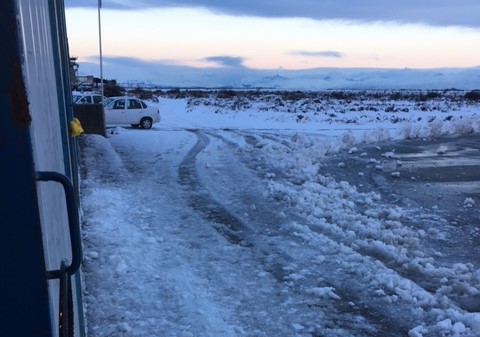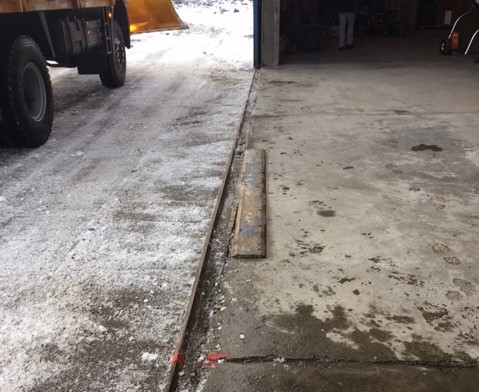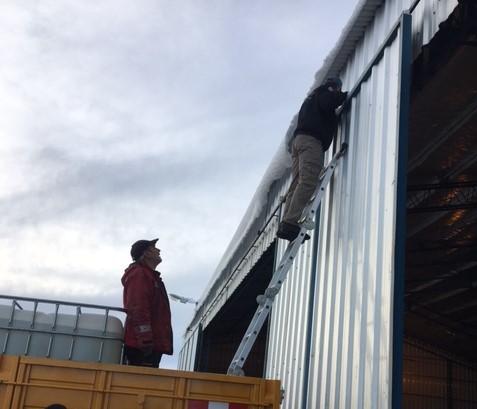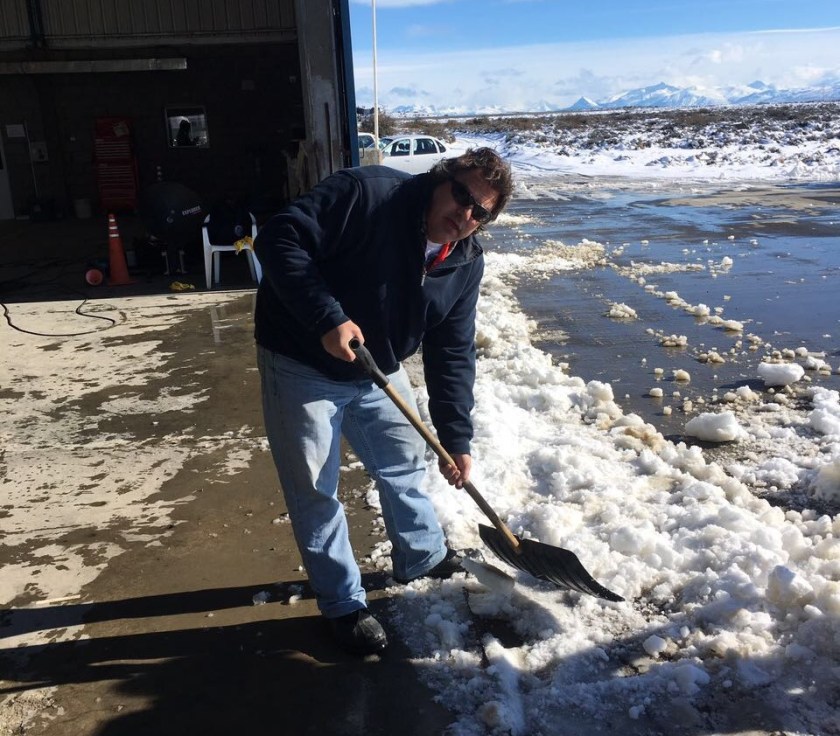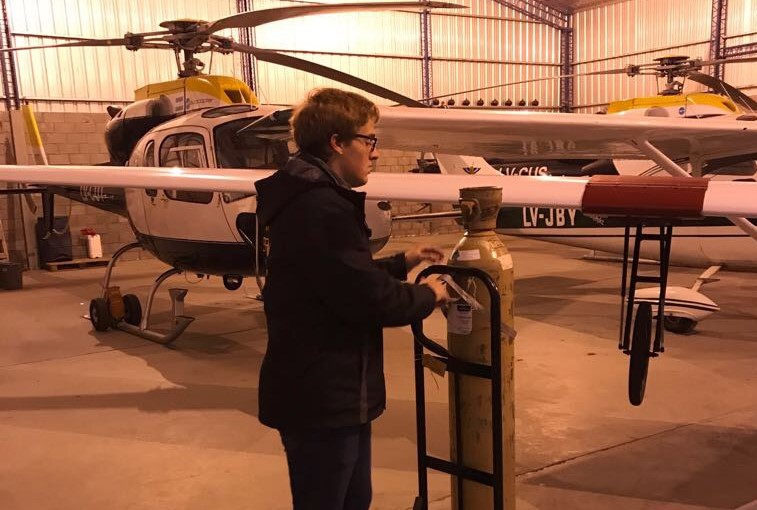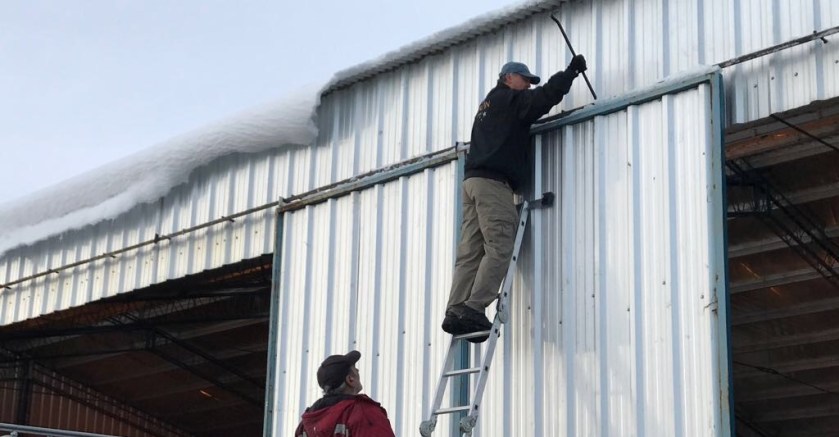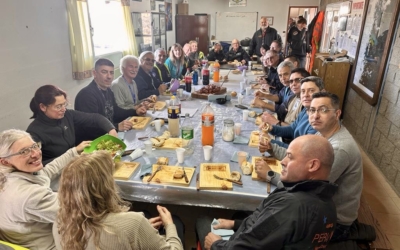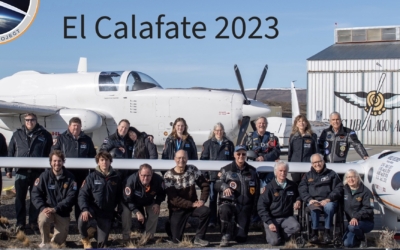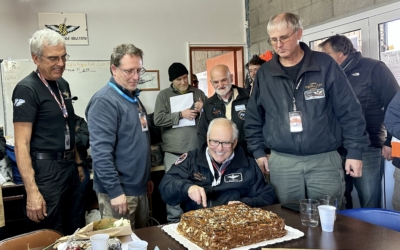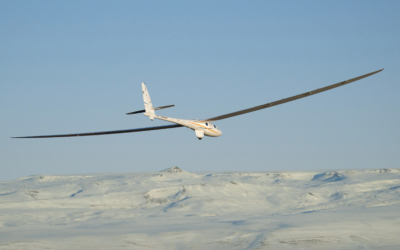This blog is dedicated to the entire support team for Perlan Project in El Calafate. On August 19 we knew there was a short window of opportunity to fly between two fronts. But when we arrived at the hangar there was ice pushed up against the 4 piece rolling hangar doors. And pushing the main wheel of Perlan 2 through snow with the low fairing and antennas was not happening. The balloon team released a weather balloon and Morgan updated some wing tip software. It was Alec’s last day so he continued to train others as his replacement. Alec left big shoes to fill.
The snow plow returned and we manually scraped, shoveled, and chomped at the ice along the bottom rail to clear it. However a middle door got stuck. Lars figured out that there was a piece of metal too low from the drooping snow ladden roof. Tim climbed up the ladder on the back of the big truck and agreed. With a crow bar on the top and pry bars at the bottom, the stuck door was finally pushed open. The team worked all day at keeping that rail clear. All the snow from the north facing (equator-facing, sun-facing) roof continued to snow bomb us through the afternoon. Particular thanks to new intern Daniel who shoveled a lot of snow all day long!
I have never fully described the pre-flight process for Perlan 2. Prior to pushing out of the hangar many individuals are running checklists to verify all is ready from the night before. Cameras installed and charged. BioMarine rebreathers installed and checked for leaks. New copilot rudder pedal adjustments, copilot phone software for bluetooth to cameras. Walkaround including drogue chute inspected. All wing tape still adhering due to cold temps. Science bay all ready, air and oxygen valves turned on. Cube sats installed. Dosimeters (radiation) installed and ready. Fire bags and smoke goggles in both cockpits. Zeolite (humidity absorption) container weighed, installed, and opened. LX-9000 flight computers have both pilots names. Both Bonehead helmets comms checked. Preheat of battery and cockpit. CNVVM Boreo tow plane preflighted and pre-warmed. Latest weather updates and forecasts from WeatherExtreme and SkySight pondered. Commercial airline schedules (with delay updates) checked. Naval Prefactura notified of launch, tower and airport personnel briefed. Finally the 85 foot sailplane needs to go through the 60 foot hangar doors. That requires a pirouette half inside the hangar and half outside the opened doors. We have the tow-out truck ready and we hook the tow/tail dolly onto the hitch.
During the ramp pre-launch there is intense focus on making sure all is ready for the flight. The pilots must have their warm clothes on, and desired cushions or pads for the cold installed. Each pilot has his own preference. They climb a short ladder to slide into the cockpits. Seat belts and shoulder straps are secured. Helmets intercom and external radio checked and masks sealed. Camelbaks clicked onto the drink port through the mask and tested for leaks. Auxillary computers go inside and secured. When the master switch is on, the tail cameras can be turned on. Bail out oxygen bottles pin removed. The 2 oxygen rebreather systems must be purged. Then each mask becomes a 100% oxygen closed system. (The pilots will “pre-breathe” throughout the long pull-out and tow before any altitude climbs.) The hatches look like oval Pringle potato chips but the front hatch is flatter. (I sewed different colored hatch bags to help keep them separate.) They are rotated along the short axis to go inside the pilots lap, then rotated again by pilot along the long axis and raised into place to align properly from inside. All four arrows on the fuselage must align with the four arrows on each cockpit hatch. This is watched closely by the ground support team. Then latches are secured inside and a test pressurization is run. They depressurize to allow some fresh air to circulate during the long tow. CapComm inside the hangar monitors the air, oxygen, radio, battery, telemetry, weather updates, Virtual Cockpit updates, and any necessary phone calls. We adopted Capsule Communications as our name for Perlan’s air to ground communications.
Finally the launch team radios for permission to tow from the hangar ramp, along two taxiways, and back taxi down the runway. This is usually a 20 minute process for pull-out. We typically use 25 as our runway. There is no crosswind runway. The tow plane follows the glider and pulls into postion as the glider is removed from the tow truck. The tow rope is hooked to glider and tow plane. BRS pin is pulled to activate. Slack rope is taken out, radio permission to tower for launch, and then Perlan 2 is airborne. Depending on headwinds and release position it can take from 30-60 minutes on tow. The primary wave is farther away (60 minutes to go through several “valleys of sink”) the tertiary is much closer (30 minutes).
If it sounds complicated, that’s because it IS incredibly complex. The team has been working well together. We try to have at least 2 people who know how to do any job. Each of us contribute based on our personal skill set. And we know that our performance here was only possible with other team members contributions like Greg Scates composite work and Tom Payne’s programming skills. This is real aviation pioneering on the cutting edge of what is safely possible. August 19 was National Aviation Day in the USA. Airbus Perlan Mission II is a true celebration of aviation!
See weather charts and flight info, photos, and video links in separate blog.
Perlan Soars! Perlan Se Eleva! Jackie
